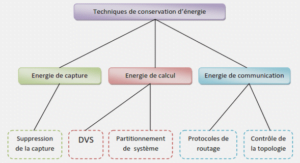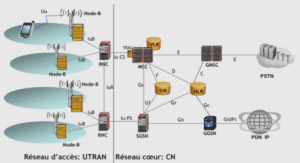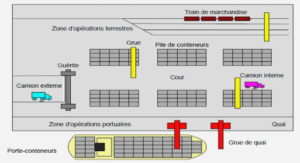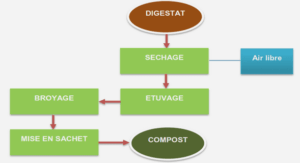The supply of agricultural products in quantity and quality is considered as an important issue to human life because of the worldwide food demand that is increasing (FAO, 2012). To achieve this aim, the improvement of agricultural production yield is necessary. On the other hand and in parallel with the increasing needs for food production, public health issues are to be solved (ex. vectorial diseases carried by insects, mosquitoes, etc). For the moment, both agriculture and public health issues are managed considering the use of pesticides. However the pesticide use involved controversies due to human health and safety as well as environmental contamination.
Generally, pesticide is a chemical or biological product used to protect a biological target site (plants or animals) from pests or diseases.
Pesticides can be classified (i) by the target pest group into different types (i.e. herbicides, insecticides, fungicides, rodenticicides, and pediculicides), (ii) by their biological mode of action (contact, systemic) or (iii) by their mode of application (fog, mist, spray, powder). The need in pesticide use in agriculture is a worldwide necessity, as an unavoidable way to control the impact of pest, diseases, weeds that affect the crop yield. Pesticide use is also a necessity when more food is expected from the same or a reduced agricultural surface area. (Eurostat, 2013) reported that approximately 67.3 million tones of pesticides are applied in France for agricultural applications. France is considered as the third top pesticide consumer country in the world and the second in Europe.
Most of pesticides are applied in liquid formulations and require spraying equipment. Agronomical specifications of a spray application have evolved during these last 20 years. Advices and practices in the 80’ and 90’ were mostly focused on a uniform distribution of small and numerous impacts per cm² (Prokop and Veverka, 2006). Nowadays, due to environmental considerations and the more systematic use of drift mitigation equipments, a smaller number of bigger impacts per cm² is accepted and seeked.
The purpose of a spraying application in agriculture is to place an effective and uniform product amount on the intended target zone. The quality of a spray application can be assessed through different time scales. Shortly after the application, deposition amount, impact size and number on targets can be evaluated by using dye tracer or image analysis techniques. On a longer time scale, the quality assessment is achieved by evaluating the biological efficacy.
In general, spray applications are evaluated considering either deposition on targets or drift or soil deposition, etc. Another approach considers the global efficacy of the application in terms of mass balance. In this case, the sprayed volume fraction collected in different compartments is taken into account . The intention is both to maximize the deposition on the targets and to minimize ground and aerial losses.
During pesticide applications, there are more than 80% of the pesticide may be derive-away from the target site as spray drift (up to 15%), rebound (up to 30%), run-off (up to 20%) and other processes (up to 15%) including evaporation or photolysis which play an important factor with side effect on the human health and environmental contamination (Knowles, 2001; Pimentel and Burgess, 2012; Minov et al., 2015).
According to the Environmental Protection Agency (EPA) and the International Organization for Standardization (ISO), spray drift can be defined as the amount of spray liquid that is carried out of the sprayed (treated) area by the action of the air currents during the application process. Spray drift can consist of droplets, vapors or dry particles (Gil and Sinfort, 2005). It is expressed as a percentage of the application volume.
Pesticide spray drift is an important issue and is considered of great concern in the European Union because of the environmental consequences of agricultural practices and the sustainable use of pesticides. In practice, some amount of the spray liquid may deposit on the ground nearby the sprayed field and may potentially harm sensitive crops, water courses, workers, residents (Miller et al. 1993; Butler Ellis & Bradley, 2002; Taylor et al, 2004; Miller et al., 2011).
Several studies have shed light on spray drift phenomenon and the most influential factors affecting its magnitude (Nuyttens et al, 2007; Nuyttens et al, 2011; Douzals, 2012). The protection of surface water in Europe has led to the development of drift mitigation measures combining buffer zones and low drift nozzles. At the present time more than 100 nozzle references are registered as low drift in France.
All agricultural chemicals can drift away from the target site when applied and the prevention from all types of drift (droplets, vapors, particles) is important regarding to the human health and environmental impacts. Pesticide spray drift can be evaluated according to two protocols: sedimentation (ground) drift and airborne (aerial) drift. Sedimentation drift is generally considered when the impact of a chemical on surface water or sensitive adjacent crop is studied. Airborne drift is generally considered when the impact of a chemical on bees, residents, workers or bystanders is studied .
Particle spray drift is defined as the movement of solid particles from the intended treatment zone during spraying application into non target zone. Solid particles can correspond to particles generated by depression seeders with coated seeds or evaporated droplets from liquid sprays. Compared to liquid droplets generated by flat fan nozzles, the range of solid particle size can be much lower involving higher drift distances (Manzone et al., 2015).
Larger (coarser) droplets may sediment at a short distance from the nozzle orifice and fall close to the point of release according to their energy. But smaller droplet sizes (finer droplets less than 100µm) remain in suspension in the air for a long time and may eventually be transported by air currents.
|
Table des matières
Introduction
Chapter 1: General introduction
1.1. Efficacy criteria of a spray application
1.2. Spray drift
1.2.1. Definition and typology
1.2.2. Causes
1.2.3. Methods for drift measurement
1.2.4. Spray drift sampling techniques for field tests
1.3. Context and objectives
1.3.1. General problem statement
1.3.2. Objectives of this study
Chapter 2: Literature Review
Abstract
Conclusions and perspectives
Chapter 3: Materials and Methods
1. Introduction
2. Description of IRSTEA Montpellier wind tunnel
2.1. Air control
2.2. Pressure liquid control
3. Boom setup
4. Distribution test bench
5. Nozzle characteristics
6. Sedimentation flowrate measurements
7. Droplet size measurements
8. Modalities setup
Chapter 4: Results
Abstract
Abstract
Abstract
General conclusion
![]() Télécharger le rapport complet
Télécharger le rapport complet






